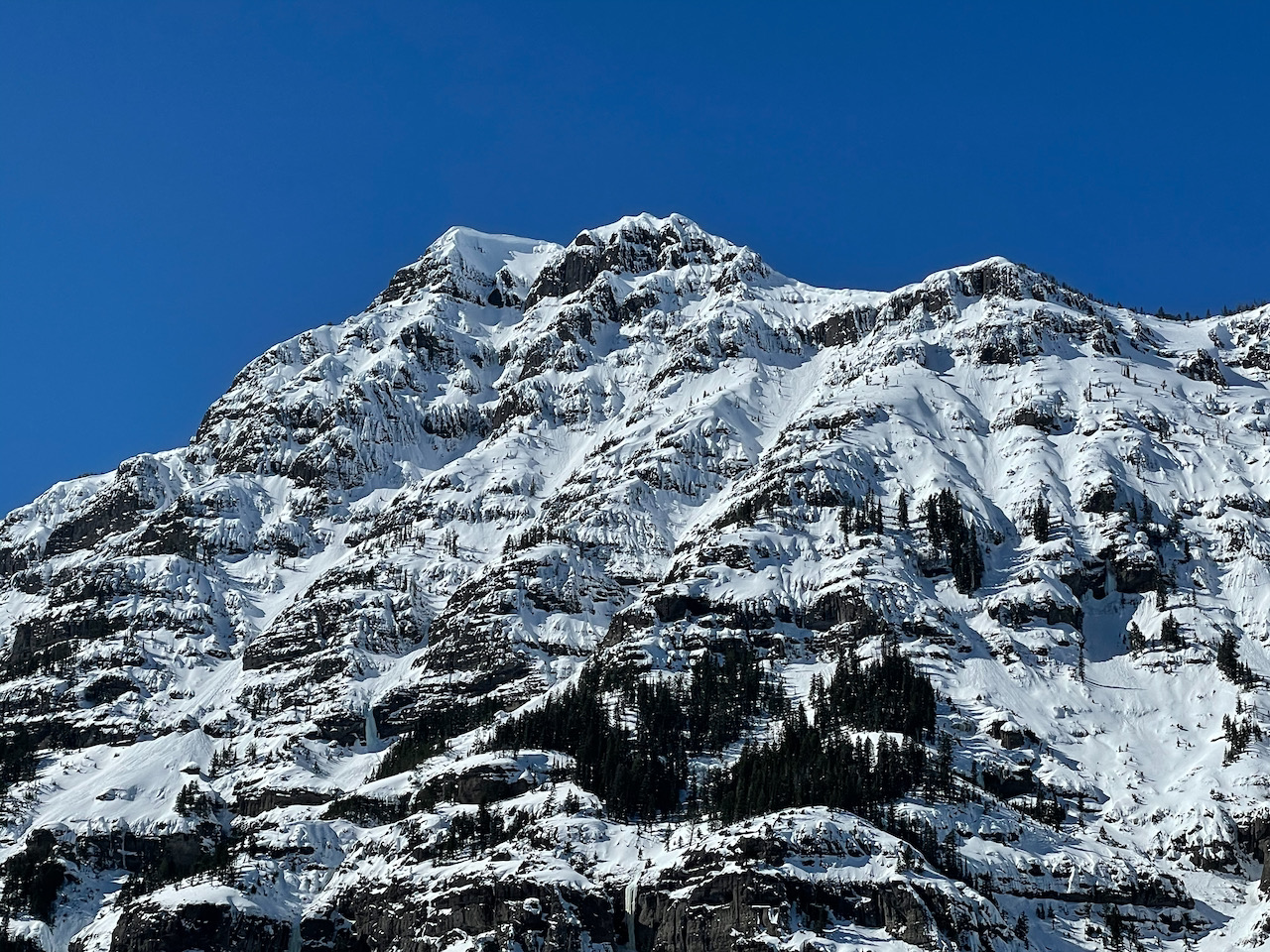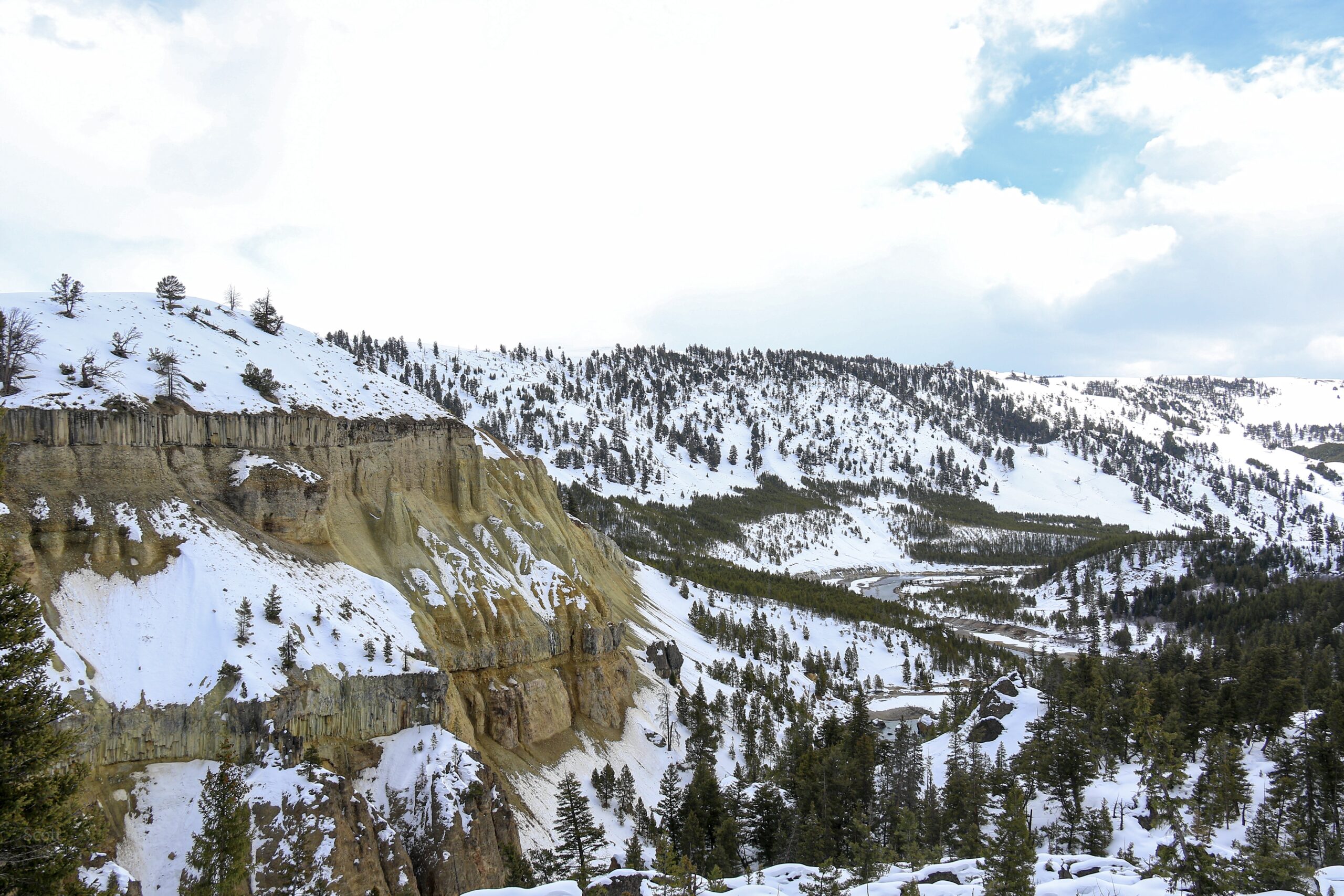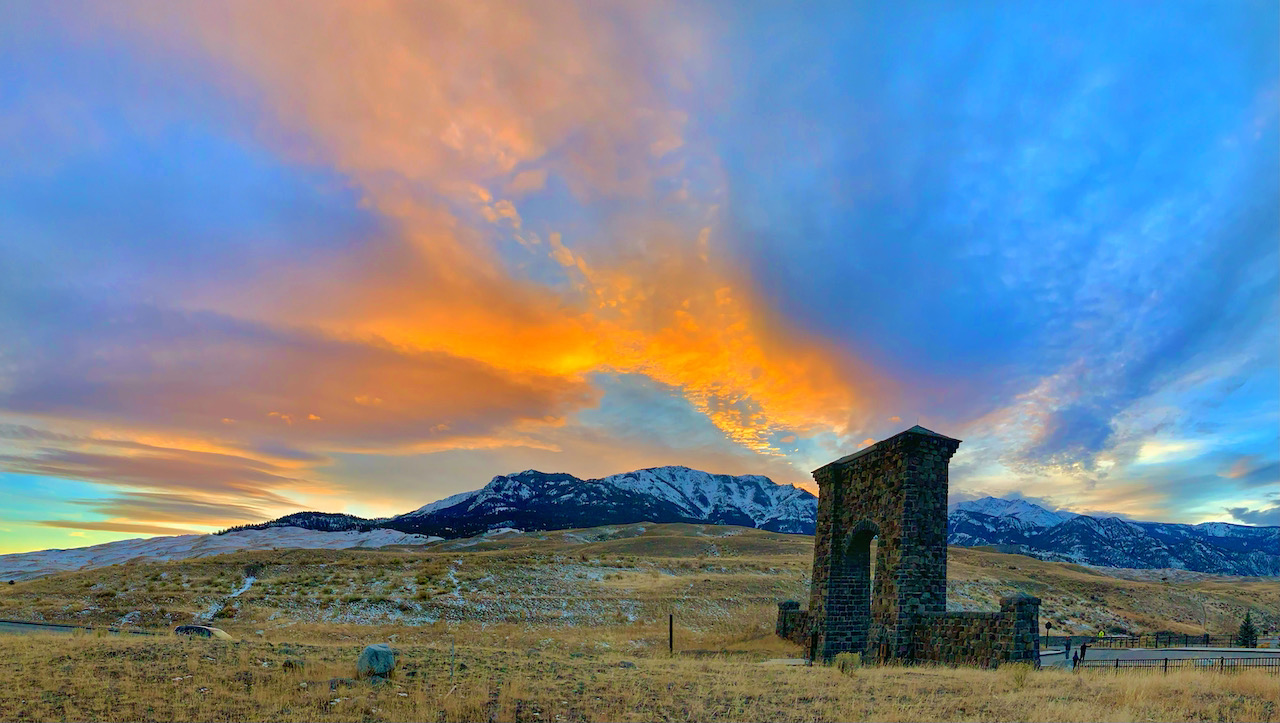This Week in Yellowstone, I take a look at the bison cull, celebrate the opening of interior roads to oversnow travel, take a gander at the sad snowpack, and take the road less traveled in the park. Plus, I share a stunning mountain view perfect for winter days in the Northern Range. Snow is in the forecast, so bundle up and come wander around America’s first National Park for the last full week of fall.
Do you enjoy this? Please give it a share on social media to help anyone and everyone get ready to visit America’s first National Park this week. If you like this and want to support my weekly park posts, please pick up a guidebook!
BIGGEST NEWS OF THE WEEK

The Basics About the Upcoming Bison Cull
Last week, Yellowstone officials announced that federal, tribal and state officials tentatively agreed to cull between 600 and 900 bison from the Yellowstone population this winter. The fate of the culled bison is pretty simple. They will either get shot by hunters as they leave Yellowstone National Park, or they will be rounded up. Most of the captured animals will be sent to slaughter, but about 80 of the bison are scheduled to be entered into the park’s quarantine program, which is in the midst of an expansion of sending bison to native lands around the US and Canada.
Yellowstone’s official count of bison is up from previous years, currently at around 5,450 animals. The Bozeman Daily Chronicle article on the cull states that “Park experts anticipate that removing 600 to 900 bison from the population over the winter will cause the population to stabilize or decline slightly at about 4,300 to 4,700 animals, according to a status report from the park. After calving, staff anticipate that number will increase to between 5,200 and 5,700 animals.”
The cull has been controversial as of late, getting so extreme that in January of 2018, unknown assailants cut a hole in the fence around the bison facility and freed the captured bison. Definitely read the link to learn all about the bison cull in recent years. Also check out the link from the National Park Service with tons of details and information about the bison management program.
While the culling process is far from perfect, it is changing and adapting. The National Park reports that “the NPS initiated the Bison Conservation Transfer Program to identify bison that don’t have brucellosis and transfer them to new areas as an alternative to sending them to slaughter. Since 2019, 104 bison have been transferred to the Fort Peck Tribes. Forty of those animals were transferred to 16 other tribes in 2020. Another 110 animals are currently in the program and will be transferred to the Fort Peck Tribes in the coming years. Yellowstone is building a partnership with Yellowstone Forever and the Greater Yellowstone Coalition to more than double program capacity and lower the number of transfer-eligible animals sent to slaughter from 75% to 35%.”
The main issue with the expansion of bison territory currently seems to be from the rangers in the states that border the park. The fear is that bison will help with the spread of brucellosis to animals on ranches around the west.
The park website says the following about Brucellosis: Brucellosis is a bacterial disease that can induce abortions or stillbirths in infected animals, but does not kill them. For ranchers, brucellosis has an economic impact because it affects the reproductive rate and marketability of their animals. Up to 60% of Yellowstone bison test positive for exposure to brucellosis (depending on age and sex). Over the last two decades, more than 20 livestock operators in the three states surrounding Yellowstone discovered brucellosis in their animals. In each case, wild elk transmitted the disease.
And now, the twist: Brucellosis was introduced to Yellowstone bison and elk by domestic cattle in the early 1900s and while it has been eradicated in cattle herds across most of the United States, bison and elk in the Greater Yellowstone Ecosystem persist as one of the last reservoirs of infection.

Snowcoach and Snowmobile Season to Kick Off on the 15th
The off-season officially comes to on end this Wednesday. Starting at 8am on the 15th of December, 2021, interior park roads will open for oversnow travel for snowmobile and snowcoach riders. The roads are only open to guided tours or those lucky enough to have scored permits for their personal snow mobiles.
Want to snowmobile without a guide in the park? Good luck. To go on an unguided snowmobile tour of Yellowstone, you need to apply for a permit in August through a park lottery system at www.recreation.gov/permits/250849 or call 877-444-6777. To score a permit is requires timing and luck.
Each day during oversnow travel season, just four non-commercially guided snowmobile groups are allowed in Yellowstone per day, which equates to one per park entrance. Group permits for up to five snowmobiles cost $40/day plus a $6 application fee and are awarded in September. Any cancellations or unclaimed permits are given out on a first-come, first-served basis in mid-October.
What this mainly means for park visitors who wish to drive to the park is an increase in guided tours leaving Mammoth Hot Springs and Gardiner. The towns around the park will see an increase in tourism, once again, as people depend on the park to experience in the depths of winter. The opening of park roads for oversnow travel is an exciting time, as pictures start to emerge from tips entering the center of the park. It is always a lot of fun to see pictures of the frozen areas around the thermal area, animals roaming next to the road in deep snow, and people all bundled up skiing and snowshoeing in the dreamscape that is Yellowstone.
OTHER NEWS
Snowpack Update
The snowpack in and around Yellowstone is continuing to struggle versus the usual average for this time of the year. The west side of the greater Yellowstone Ecosystem, including the mountains around West Yellowstone and Big Sky are around 70% of average for this time of year. The rest of the park is at 61% during the time of publication. Obviously the new snow will help, but it will have to snow more than average for the snowpack to catch up. This does not appear to be in the forecast this coming week. All snow helps, though.
If the snowpack doesn’t start to turn around in the next few weeks or month and we have a normal summer, it will almost all but guarantee a very hard 2022 for forest fires in the region, as well as near record low river levels. It can turn around for sure. We just all have to think snow.
Here is the map, as of December 9th, 2021:
WEATHER FOR THE COMING WEEK
Snow is in the forecast on the eastern side of the park, while temperatures are little warmer to the west. This is how it will be for awhile. Gardiner, Montana could see eight inches of snow falling this coming week, with the heaviest of it taking place on Tuesday. Cooke City could see up to 13 inches of snow over the next seven days. West Yellowstone is going to be open for snowcoach and snowmobile tours and it looks like there actually may be some snow out there soon. Between now and next Wednesday, West could see 19 inches of snow, if the forecast is correct. Hopefully, these totals are underestimates. However, the forecast could change quickly for next week and the snow could be minimal, so always double check.



This is the weather.com forecast for the closest towns to the park- Gardiner and Cooke City. While they don’t specifically cover the entire region, these forecasts give a great idea of what to expect all around the region As always, weather can and does change fast in the park, so always be prepared for anything. Next week, I’’l start including West Yellowstone again.
WILDLIFE WATCH

The bighorn sheep rut is starting to wind down, but good action still remains. Keep an eye out for them near Corwin Springs north of the park, the cliffs between Mammoth and Gardiner, and even out near the Yellowstone Picnic Area, a mile or two from the Roosevelt Lodge.
The new snow will help make more animals visible, so I wouldn’t be surprised if there are very good wolf watching days to be found. My main guesses as to where will be at the Hellroaring Overlook, around Slough Creek, and of course Lamar Valley. There may be wolf action elsewhere, but don’t worry. If you drive the roads, you’ll see the cars and spotting scope clad people at or near a pullout.
I have heard that the moose are back at Pebble Creek. I have to see reliable images, but you never know. There has also been a fox near Pebble Creek that has been hunting. You’ll also see plenty of bison out this way. For elk, there will be hit and miss in the park, but you should see some near Mammoth and also the Roosevelt Junction.
The pronghorn are also congregating with the elk near Gardiner, typically near the road between the Arch and the pay station. Elk and deer will also be close to the road the entire route down Highway 89 through Paradise Valley. Please keep an eye out, as dozens of each are hit every month on this stretch.
Want the best tips and locations for wildlife sightings on your Yellowstone trip? I wrote a book for that very purpose! Pick up your digital ebook or paperback copy now!
ROADS AND CAMPGROUNDS

With moisture and cold weather in the region, the roads this week will be a little icy in spots. You may encounter areas with heavier snow on or near the road, especially the closer to Silver Gate and Cooke City you get.
For up-to-date information consult the map above, call (307) 344-2117 for recorded information, or sign up to receive Yellowstone road alerts on your mobile phone by texting “82190” to 888-777 (an automatic text reply will confirm receipt and provide instructions). Anticipate possible road closures due to inclement weather and dangerous driving conditions.
Planning on camping in the park this week?
Enjoy being cold! Mammoth is even close to filling up, so there really isn’t much to note. If you do camp, enjoy the silence, solitude and chilly overnight temperatures. The warmest it is forecasted to be in Mammoth is 36 degrees on Tuesday. The lowest temperatures will be in the single digits this weekend. Check the status of campgrounds in the park online here.
HIGHLIGHT OF THE WEEK

As winter weather finally starts to drop to the lower elevations, those who enter the park tend to travel less and less into the park. On the warm summer days, many drivers who were adventuring in the Northern Range would drive out past Cooke City, out toward the Beartooth Plateau. Now that snow is around, the average person driving into the Northern Range doesn’t proceed much further east than the end of Lamar Valley or maybe Pebble Creek.
The park road continues 9 miles past Pebble Creek to the Northeast Entrance, passing through idyllic scenes of winter. Along narrow creeks, through small open meadows and even near the base of the always impressive Barronette Peak. The viewpoint at Baronnette Peak is worth the trip alone. Now that snow and cold temperatures have stuck around, the mountain becomes draped in white, interrupted only by exposed rock faces and frozen waterfalls. To see it in the winter, with dozens of huge waterfalls frozen in time, gives a sense of size and scale that is truly impressive. The cornices at the top of the mountain, curling precariously over the exposed edges, make mountain gazing spectacular.
If that alone isn’t worth driving down to see, know that I often see moose out this way in the winter, often near the road or posing perfectly in front of the massive mountains to the north. It is a pretty rad and very unique corner of Yellowstone that should be visited year round. There are also a handful of trails to cross country ski or snowshoe that are largely untouched.
TIP OF THE WEEK

Take the Old Entrance Road.
As you drive to or from the park on Highway 89, there is a slight detour that grants access onto a small corner of the park. Running from across the river from Corwin Springs all the way to the Roosevelt Arch, the Old Yellowstone Trail Road is a fantastic way to see wildlife, as well as closer views of Devil’s Slide and Sepulcher Mountain. You’ll also be following the way that people used to enter the park, as this is the side of the river where the train station ended and the stagecoach road started.
Along this historic and overlooked road, you’ll more than likely see eagles and hawks, deer and elk, and even pronghorn, bison and bighorn sheep. The road is just under 8 miles long from point to point and passes through a small section of the park near the Yellowstone River. The road can be muddy at times, as it is not paved, but is almost always worth the slight detour. Keep a close eye as you get near Gardiner. On the river side of the road you’ll come across the old Gardiner Cemetery, where headstones are well over 100 years old.
WANT TO KNOW MORE?
Curious about something not mentioned in the post?
Send me an email or message on social media and let me know how I can help.



